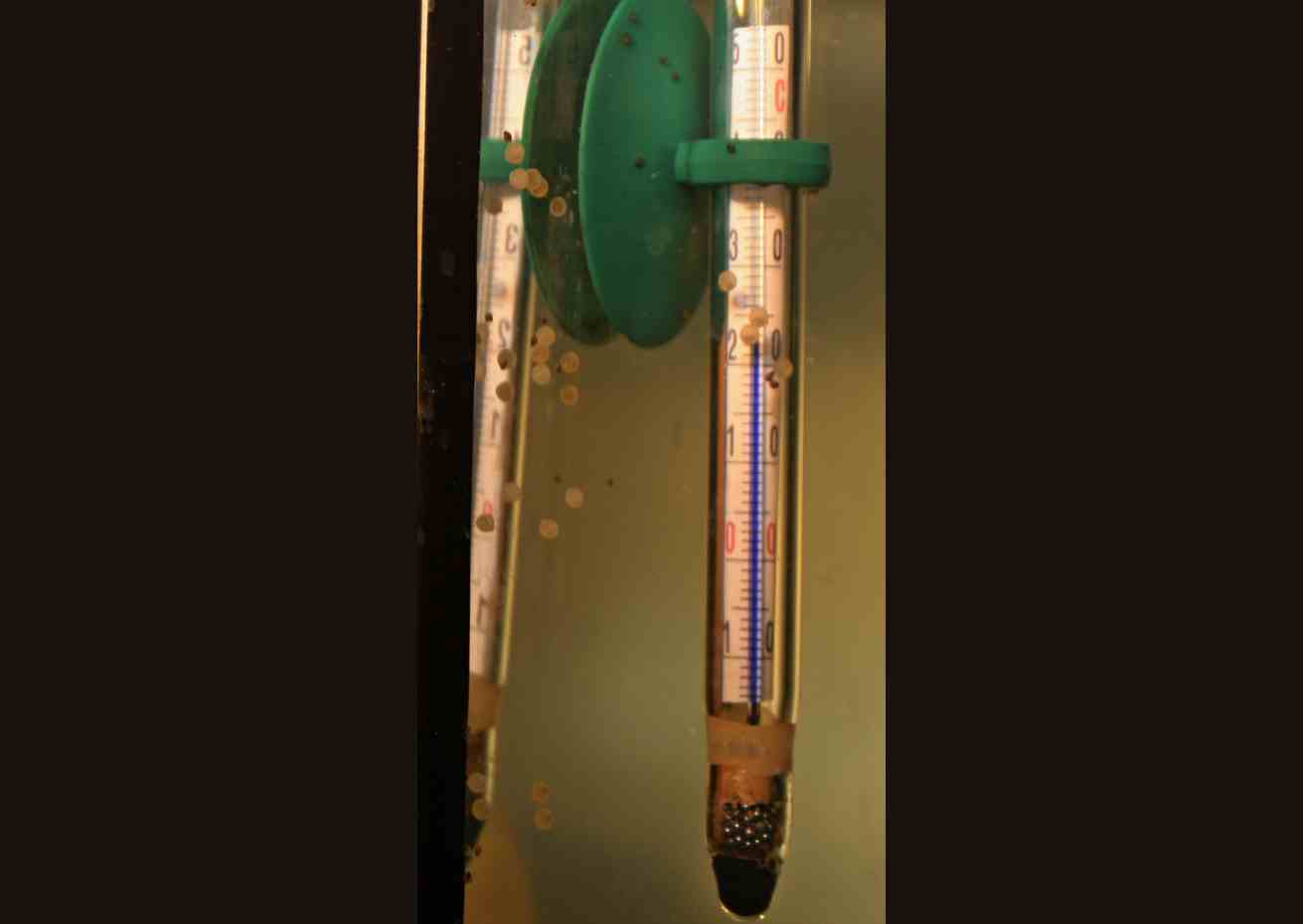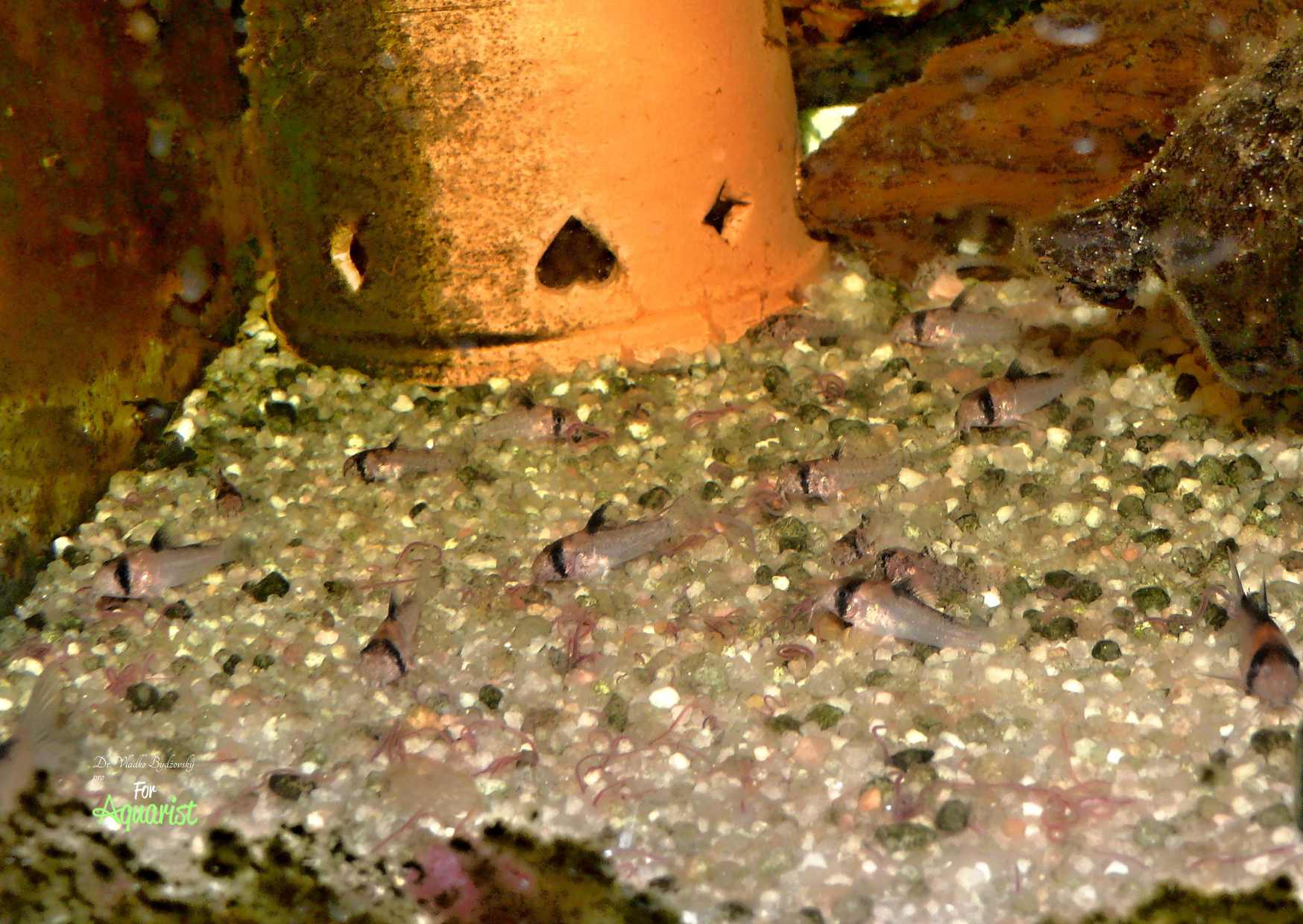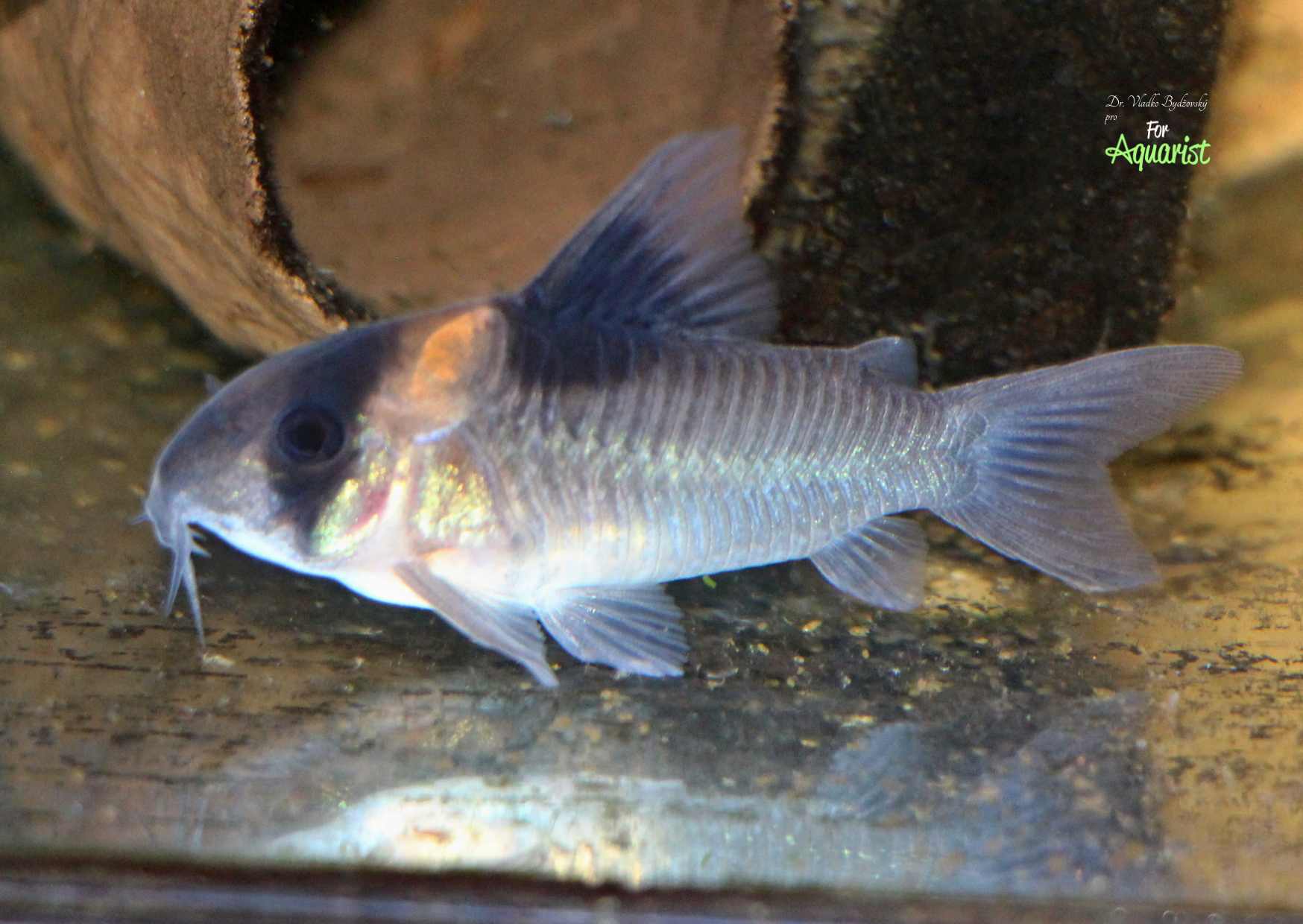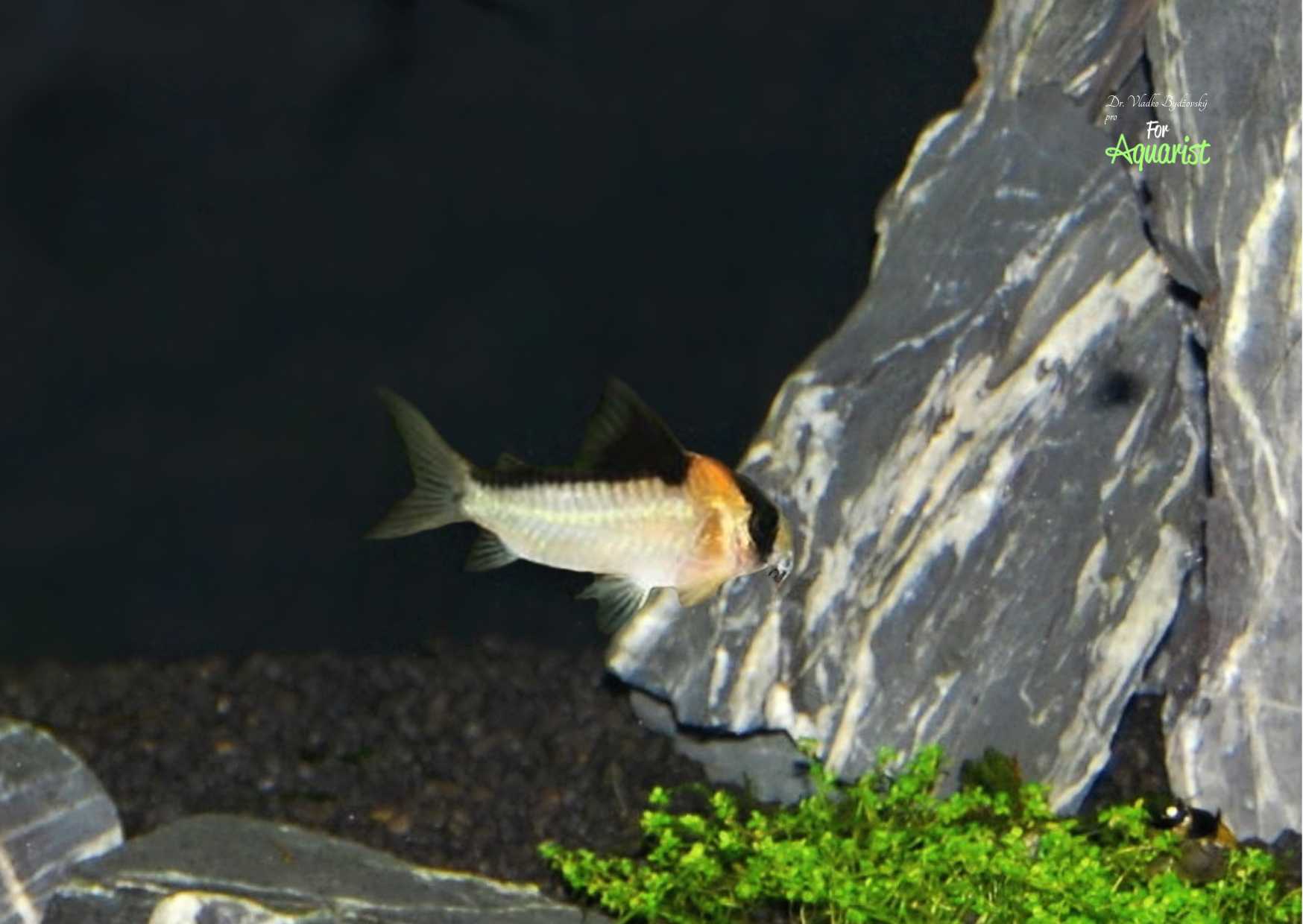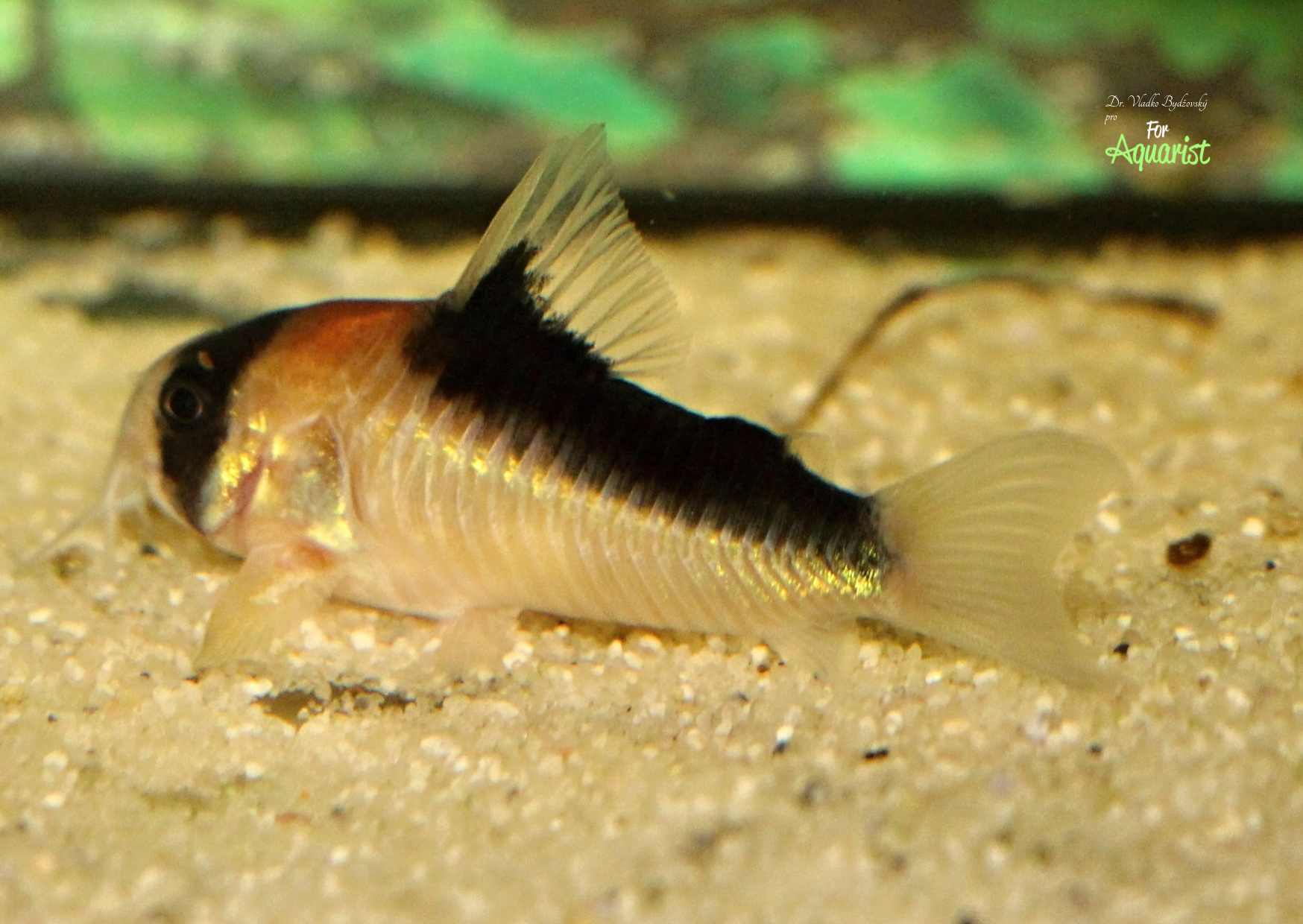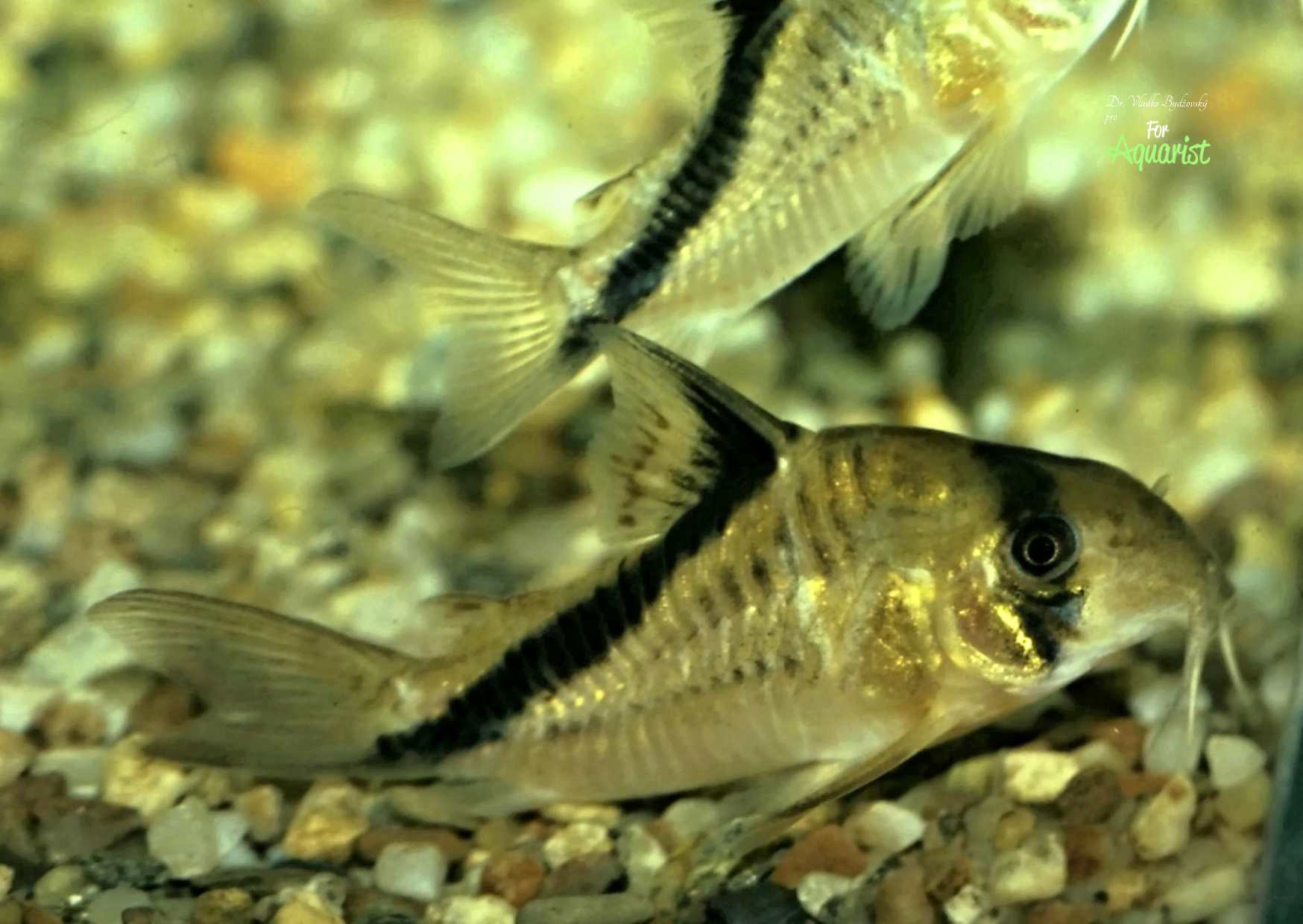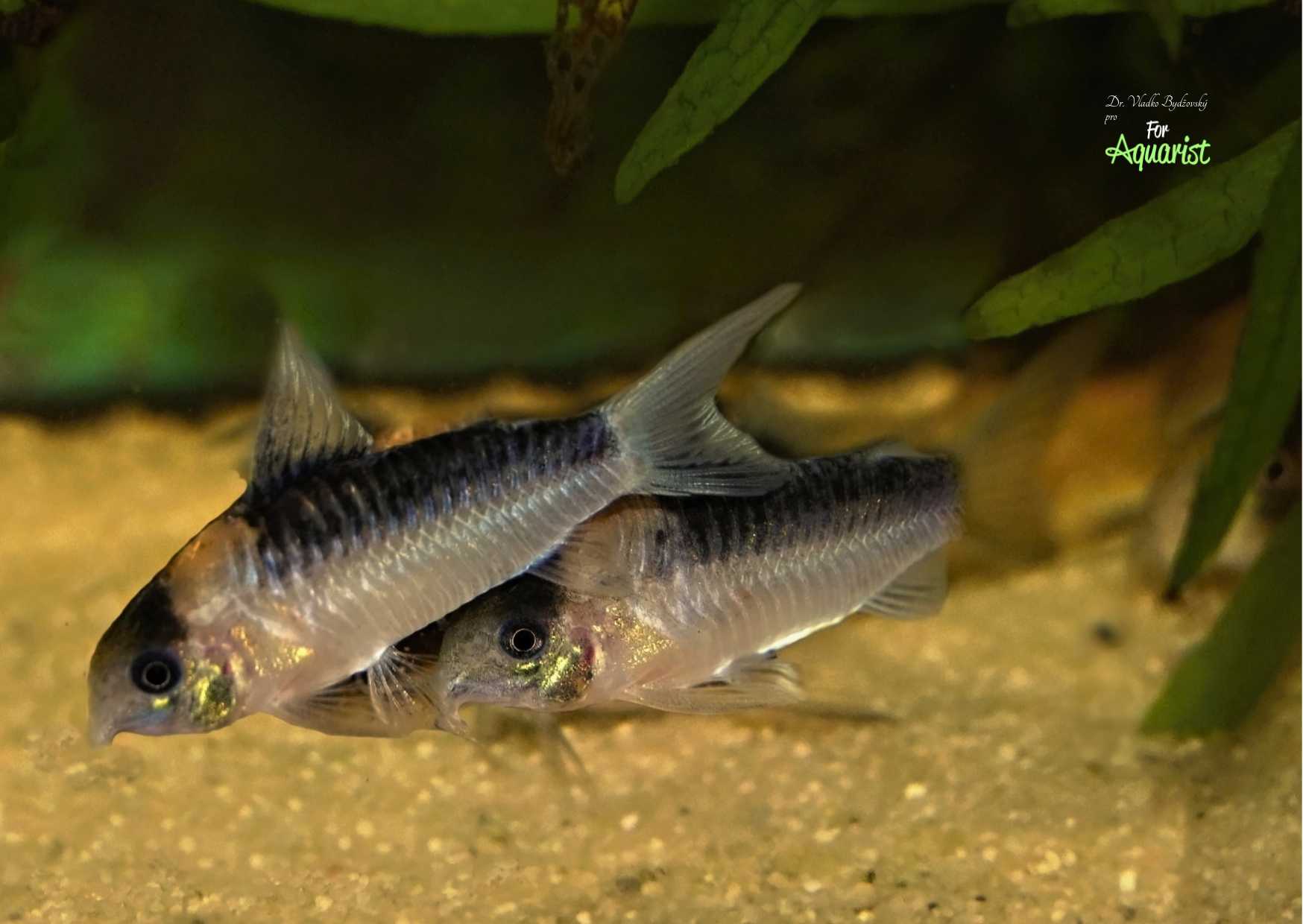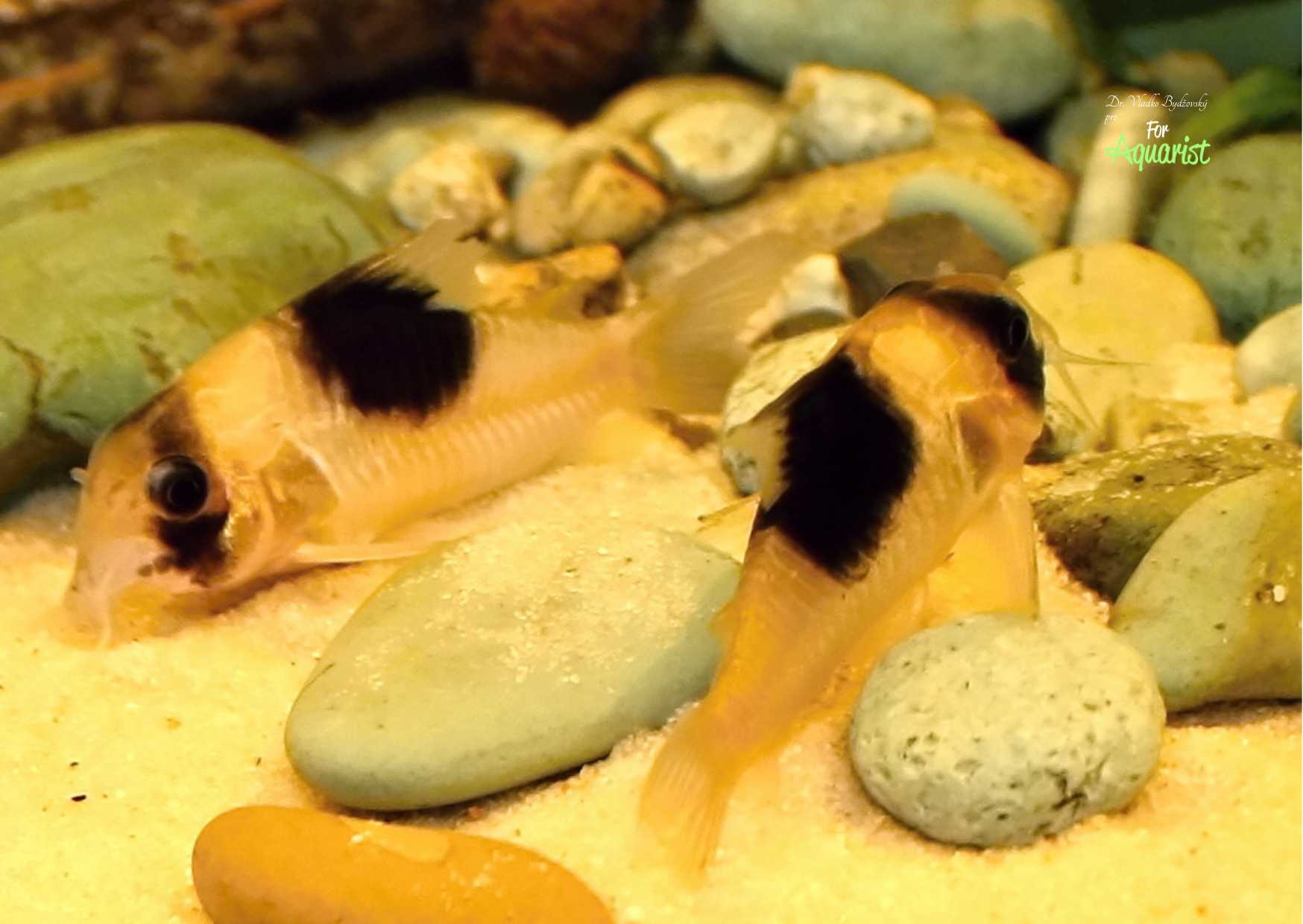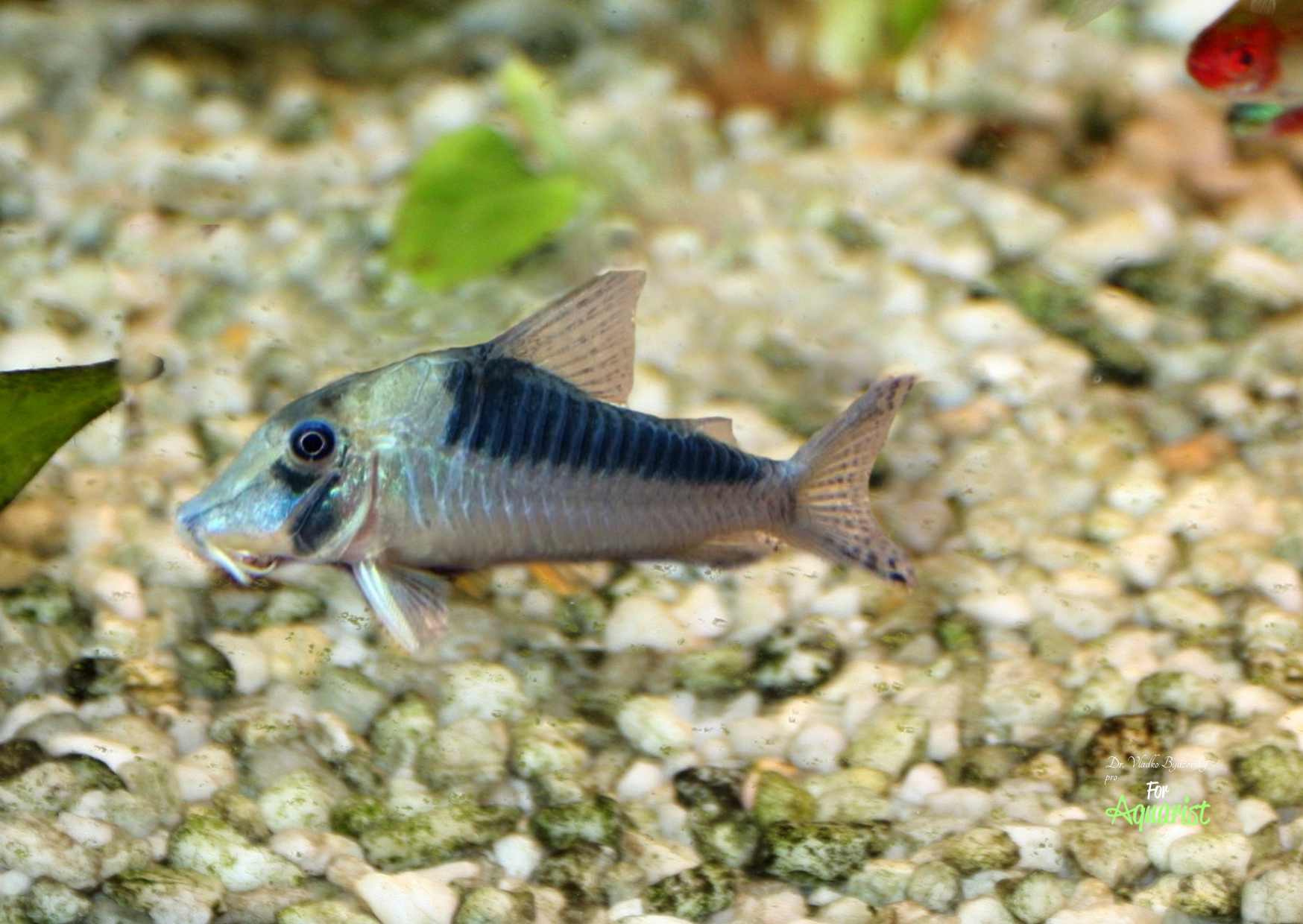In recent decades, there has been a growing interest among aquarists and ichthyologists in a group of catfish from the upper Rio Negro basin, which are characterized by strikingly similar appearances but surprising genetic and morphological diversity. This article focuses on an overview of representatives from the group of species Corydoras adolfoi, C. burgessi, C. duplicareus, and others, including their taxonomic renaming, color variants, and specific breeding requirements.
Confusion in Golden Colors
I decided to write this article after I had the opportunity to observe many new catfish in recent years, which were very similar to the Burgess catfish. Originally, there was a relatively small group of catfish belonging to the complex Corydoras aeneus (Oseogaster aeneus) and groups Corydoras burgessi (Hoplisoma burgessi).
Burgess Corydoras Complex
Everyone had in common that they originate from the upper basin of the Rio Negro and they are dominated by a golden color with a variably colored black back. Then suddenly, color variants of individual species appeared, e.g. in Corydoras burgessi (Hoplisoma burgessi) MAYLAND (1988) described four variants. The decisive factor was whether the body was only orange-yellow and concentrated black around the dorsal fin, as we know it from the common catfish Burgess, but other fish also had spots or stripes on the body or even several black longitudinal lines, etc. There was a complete loss of overview regarding what constitutes a good species, what is an undescribed species, or just a variant of a species. Since the appearance of yet undescribed catfish, referred to as C or CW, the situation has worsened even further. We would like to introduce you today to some of the fish from this group.
When Color Isn’t Enough
I first received the Burgess's cory from my longtime friend Dipl.-Ing. Josef LOCHNER from Dachau (February 21, 1992). At that time, they were priced at an incredible 60 DM (Deutsche Mark) in the store. They originated from the F1 breeding of a well-known Bavarian aquarist and then chairman of VDA Region 12 Bavaria. The Burgess's cory comes from western Brazil, from the upper basin of the Rio Negro, where it lives in the Rio Unini, a right tributary of the Rio Negro. When Dr. BURGESS (1982) described a new species of corydoras from the São Gabriel (Uaupes) area - Corydoras adolfoi (Hoplisoma adolfoi) (in honor of Adolf Schwartze), NIJSSEN and ISBRÜCKER later noted that among these novelties were also other and slightly different specimens.
Relatives from the Blackwater
And so they established a new species, Corydoras imitator (1983). To make matters worse, another very similar species appeared, Corydoras duplicareus. At that time, MAYLAND (1988) believed that there are a total of 4 color variants. These catfish are often confused by many aquarists. Of these, the most widespread in our country is Corydoras duplicareus, probably the easiest to breed, often considered merely a broadly striped color variant Corydoras adolfoi (Hoplisoma adolfoi), until DNA analysis clarified the issue.
When DNA Decides
hese very similar catfish, which mainly come from the upper basin of the Rio Negro and mostly inhabit black waters, are very popular. Today, their group has somewhat expanded and includes the following species: Corydoras adolfoi (Hoplisoma adolfoi), Corydoras burgessi (Hoplisoma burgessi), Corydoras duplicareus (Hoplisoma duplicareus), Corydoras imitator (Brochis imitator), Corydoras nijseni (Gastrodermus nijseni) and Corydoras serratus (remains Corydoras serratus), some of them also include Corydoras melini (Hoplisoma melini).
C and CW: In the Realm of Undescribed Species
To make it even more complicated, there are a number of undiscovered catfish – I personally had known CW 49 or CW 51 for several years. In December 2015, the company Glaser/Rodgau introduced CW 45 and so on. And as if that wasn’t complicated enough, variants with short and long snouts also appeared — further confusing taxonomy, yet enhancing the group’s appeal among aquarists., such as: Corydoras adolfoi (Hoplisoma adolfoi) Corydoras imitator (Brochis imitator), Corydoras duplicareus (Hoplisoma duplicareus) x Corydoras serratusor C 121 x C 140 etc.
Burgess's cory live in typical "black" water, which is not only extremely acidic (pH 3.98 – 5.0) but also very soft (3.0-40 μS/cm). Even in captivity, it is not good to change these conditions too much. The well-known fact that the water in České Budějovice is still relatively soft plays in favor of my breeding plans. Knowledge of water conditioning for tetras, which come from South American "black" waters, plays an important role in breeding.
How to Keep Them in an Aquarium
After transporting the catfish to České Budějovice, the entire group was doing relatively well. With an abundance of live or frozen food, among which plankton dominated, but also brine shrimp nauplii, and occasionally high-quality artificial food, the fish were thriving. Once or twice a week, they received larvae of the midge, and in the time leading up to spawning, also the much-discussed Tubifex tubifex. This will likely be a topic of discussion, as they cause a number of different diseases in many other fish.
Corydoras, like bottom-dwelling fish, are accustomed to accepting various worms in nature, so they usually do not mind this food as long as we rinse it properly under running water before use. If we have grindal or nematodes available, it is not a mistake to offer them once – or twice a week! Every day or every other day, we must vacuum up leftover food, as contaminated water can pose a serious risk to Corydoras! With the resulting bacterial infections can easily kill both fry and adult fish.
Corys are typical shoaling fish that swim together above the bottom and constantly search for something to eat. Therefore, the main rule for keeping them should always be to keep them in groups of these peaceful and otherwise quite calm catfish. The aquarium for breeding is adapted to the size of the fish (males 5.5 cm, females up to 6 cm), it should be at least 60-80 liters, preferably something larger with not too high a water column.
It is advantageous to leave the back parts of the aquarium richly planted with plants, which then, along with roots or stones, create a natural shelter for the fish. Dark river sand with a grain size of about 3-5 mm at the bottom, the lighting of the aquarium is not too harsh. The community can consist mainly of smaller and peaceful tetras or South American cichlids.
Step by Step to Breeding
We need to prepare the fish for breeding, I have observed myself, similarly to other imports, that Fish have the highest spawning activity from April to October, which is strikingly similar to spawning behavior Pterophyllum altum (LINKE 1998, personal communication). At that time, I was adding more Tubifex worms – about every other day, and mainly I was changing about 5-10 liters of water every day in the 40-liter breeding aquarium.
I tried to mimic the rainy season. It is good when the water temperature fluctuates. Since we need very soft water for spawning (in my case, it was natural water from Kvilda, 26 °C, pH 5.8, 12 μS/cm), we must observe the fish daily. When I saw the clear courtship displays of the males and their attempts to achieve the typical T-position, I replaced the water in the tank with this spawning water. Then I waited another day or two to see what would happen. However, the fertility of these fish is not very high compared to other species of corydoras.
During these periods (April–October), I achieved a maximum of 2 spawns and a total of about 20-30 raised fry. The fish spawned in a group (from the original five individuals, I still had 3 males and 2 females). I did not observe the parents' cannibalistic appetite, they did not take much care of the eggs, but after the spawning, I preferred to catch the parents immediately. It was also a fact that the fish were well-fed.
Despite the dominance of feeding on plankton (LOCHNER, SEUSS – personal communication), it was not possible to observe any cannibalistic appetite. The initial food consists of either fine brine shrimp nauplii or powdered feed scalded with hot water. However, the fish grow very slowly. Gradually, we also add other feed. After about a week, I start adding MikroMin and about a week later I also add TabiMin or similar feed from other companies. Gradually, we get used to our tap water and do not forget not only about the low water level in the aquarium but also about its regular replacement and sufficient water flow during proper aeration.
Images
- Corydoras adolfoi (Hoplisoma adolfoi)feels at home in a smaller aquarium, where they grow up to 6 cm.
- It originates from the upper basin of the Rio Negro river, where it was caught in the well-known stream Nouba Ouba near São Gabriel do Cachoeira, another location is Rio Uaupes.
- These catfish grow to 5-6 cm (males are always slightly smaller), while in the wild they can reach sizes of up to 7 cm.
- In the picture, the female on the right, the male on the left, and a 3-month-old fish in the middle.
- Roe Corydoras adolfoi (Hoplisoma adolfoi).
- 3 months old Corydoras adolfoi (Hoplisoma adolfoi).
- Corydoras burgessi (Hoplisoma burgessi)– the male in the picture – has the species name after the American ichthyologist Dr. W. E. Burgess.
- Female Corydoras burgessi (Hoplisoma burgessi).
- Corydoras burgessi (Hoplisoma burgessi) has several color variants, of which the most common is probably this one, characterized by a black spot under the dorsal fin and a dark-colored dorsal fin. It originates from the upper basin of the Rio Negro, specifically from the Rio Unini near São Gabriel do Cachoeira.
- Corydoras cf. burgessi (C 121) is not a very old novelty, The first mention of him dates back to 2004 (DATZ No.3).
- It also originates from the basin of the Rio Negro river.
- Traders also refer to it as Corydoras sp. aff burgessior Corydoras sp. aff. adolfoi.
- It differs slightly from this group in that it has about 100 eggs from one spawning.
- Corydoras davidsandsi (Hoplisoma davidsansi) originates from Brazil, where he lives in the tributary of the Rio Negro, Rio Unini, a river with "wild" water.
- Corydoras duplicareus (Hoplisoma duplicareus) has mainly a dorsal stripe about 2 times thicker than Corydoras adolfoi (Hoplisoma adolfoi). It lives in the upper basin of the Rio Negro river, in the Rio Puranga river, 8 km north of Nouba Ouba.
- Spawing Corydoras duplicareus (Hoplisoma duplicareus). The roe is relatively large.
- Corydoras imitator (Brochis imitator) is a double Corydoras adolfoi (Hoplisoma adolfoi) with a long snout, which is much rarer in the wild and joins Corydoras adolfoi (Hoplisoma adolfoi).
- In this common herd, they find better protection against predators.
- It also originates from the upper Rio Negro.
- Corydoras meliniis named after Dr. Doug Melin. It originates from a larger area in the territory of Colombia and Brazil, from the confluence of the rivers Rio Papuri and Rio Uaupes, but also from the basin of the river Rio Guaviare, which belongs to the Orinoco basin, from the rivers Rio Losada, Rio Ortuguiazza, Rio Cagueta in the Amazon basin.
- Corydoras nijsseni (Gastrodermus nijseni) has a lighter color than Corydoras adolfoi (Hoplisoma adolfoi), but has a rounder frontal surface, is overall smaller. It originates from the upper basin of the Rio Negro river. According to the literature, it has from one spawn to several hundred eggs, which are also smaller than those of most species described here.
- Corydoras serratus originates from the upper basins of Rio Negro and Rio Poranga. Several color variants are also available.
- Corydoras sp. CW 45 is a relatively rare species of catfish originating from Brazil.
- Corydoras sp. CW 49 It originates from Colombia. It was first brought to Europe in 2010, when I saw it at Interzoo in Nuremberg. Interestingly, it is also caught in the basin of the Rio Uaupes, but not in the same place as CW 51.
- Corydoras sp. CW 51 originates from the border area of Brazil from the upper reaches of the Rio Caguetá river, but also from the Rio Uaupes area. It is speculated that it could be a variant of CW 49.

